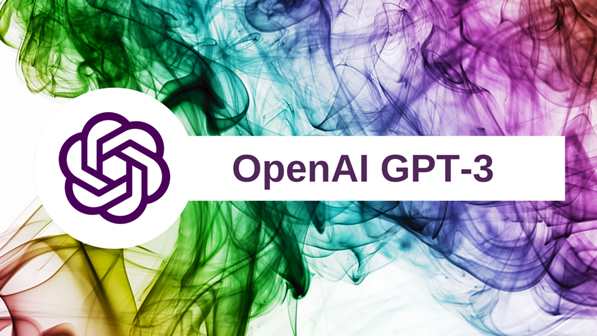
Matt Payne of Width.ai takes a look at six deep learning based tools that are changing the way customer service is done in 2022.
Providing efficient and quality customer service is one of the most important business practices you can do in the modern business world. Businesses are constantly working to improve the different areas where they interact with the exact people who push their business forward, and ensure that they feel important to the business.
Deep learning based applications allow businesses to automate and personalize different workflows in their customer service. These applications allow businesses to take advantage of their data and understanding of good customer service to create tools that push their customer service forward in the new age of business.
Here are the six most popular ways deep learning is changing customer service in 2022.
Deep Learning Chatbots
Chatbots have seen a huge climb in popularity over the last few years, and with results such as leading to 30% of sales for an ecommerce company it’s not surprising. These chatbots are now used either as simple customer support tools or as interactive quizzes that help guide potential customers through the shopping experience.
Deep learning chatbots give you the ability to automate your customer service conversations past just simple responses or bucket answers. These chatbots learn to understand a wide variety of user input questions and text and can generate appropriate responses with natural language processing models such as GPT-3. These chatbots can also hold the conversation for multiple questions and multiple turns in the language used.
On top of natural language processing architectures such as GPT-3 there are a few other popular ones for chatbots such as Blender Bot by Facebook, BERT, and Blender Bot 2.
Product Matching For Efficient Shopping
Helping shoppers reach their goal product as quick as possible is one of the easiest things to wrap your head around as a way to perform customer service. Customers being unable to reach what they’re looking for in a timely manner or at all is one of the most common ways businesses lose customers. Often this comes from store searches not leading to the exact product or product market that the customer envisioned would show up.

Product matching is a deep learning approach that allows you to match exact products from your store to a user’s search query or to other products. These deep learning models learn how to correlate search information such as keywords to exact product titles and descriptions. In another use case with the same models you can match similar products or products often purchased together to help users reach products they want to buy. Amazon takes full advantage of this by recommending you products based on ones you’ve already selected or based on your search.
The most popular deep learning framework for product matching is natural language processing. Models such as BERT, GPT-3, and frameworks such as spaCy can learn these relationships between products and user searches. As you can imagine optimizing this workflow greatly increases the speed in which users find the exact product they had in mind.
Quickly Find Fraud
As fraud continues to grow in the modern online world companies are looking for smarter ways to fight and identify fraud. Companies such as Freshbooks are leveraging deep learning to detect fraudulent payments. Their overwhelming access to transaction data to use for large network training allows them to build these deep learning systems at a larger scale.
Customer Issue Recognition With Social Media Monitoring Technology
Recognizing customer issues as they rise gives you a quick mover advantage in resolving them and understanding what led to the issue. Social media monitoring allows you to automate the process of triaging and responding to customer support requests through social media, or recognize system outages based on the support messages. Being able to respond to customers through social media quickly gives you a chance to resolve any issues before losing the customer. This study supports this idea as customers who engage with companies on social media spend more money (20-40%) in their lifetime with that company.
These systems mostly leverage natural language processing and deep neural networks to perform tasks such as:
- Categorize the requests with neural networks
- Understanding severity with sentiment analysis
- Exact key information such as customer names or user names with NLP
- Respond to simple requests with GPT-3 and BERT
Incoming Call Classification
Incoming call classification allows you to automate the process of routing calls to the correct agent group instantly. By using natural language processing models such as text classification and deep learning neural networks such as speech recognition we can instantly understand where to send a call center request based on what the problem is. These systems are becoming more popular as they’ve shown to instantly reduce call hold times for customers.
Huge companies such as Verizon and T-Mobiile are already leveraging these systems to help customers reach the correct call center based on what products they’re currently using or looking to switch to.
Automated Email Verification
Verifying not only that an email is in the correct format but that the email address exists is an extremely fast way to make sure you don’t lose contact with someone during the support process. These deep learning based email verification tools such as voilanorbert allow you to quickly verify the email address, the domain behind the email address, and even guess the format of users with a similar email address domain.

Huge companies like SendGrid are using deep learning pipelines like the one seen above to valid an email address. These pipelines contain a number of models used for each part of the equation and like the pipeline above use neural networks as the key component.
The Future Of Deep Learning In Customer Service
With 80% of sales and marketing leaders saying they already use artificial intelligence in the form of chatbots or plan to use it, and the idea that deep learning tools like chatbots alone will cost save over $8 billion each year, it’s no stretch to say that deep learning as a part of customer service is already a huge part of the industry today. With other tools such as the ones laid out above continuing to improve in accuracy and become easier to use, you have to agree with the idea that deep learning is here to stay in customer service.
The ease of using some of these open source deep learning models allows businesses just like yours to quickly experiment with and spin up applications that automate customer service workflows today. Given the ease of these models, and the ample data available on the market, it’s time for you to start moving your customer service workflows to deep
About the Author
Matt Payne writes for Width.ai. Width.ai. automates huge chunks of your workflow or improve your products capabilities dramatically using Ai & machine learning solutions with clear cut ROI.




